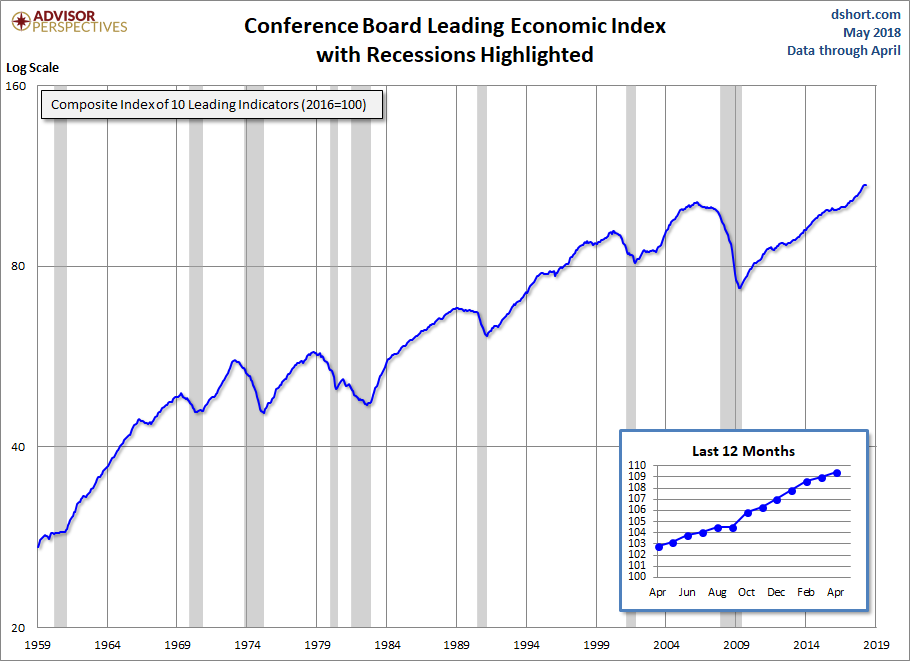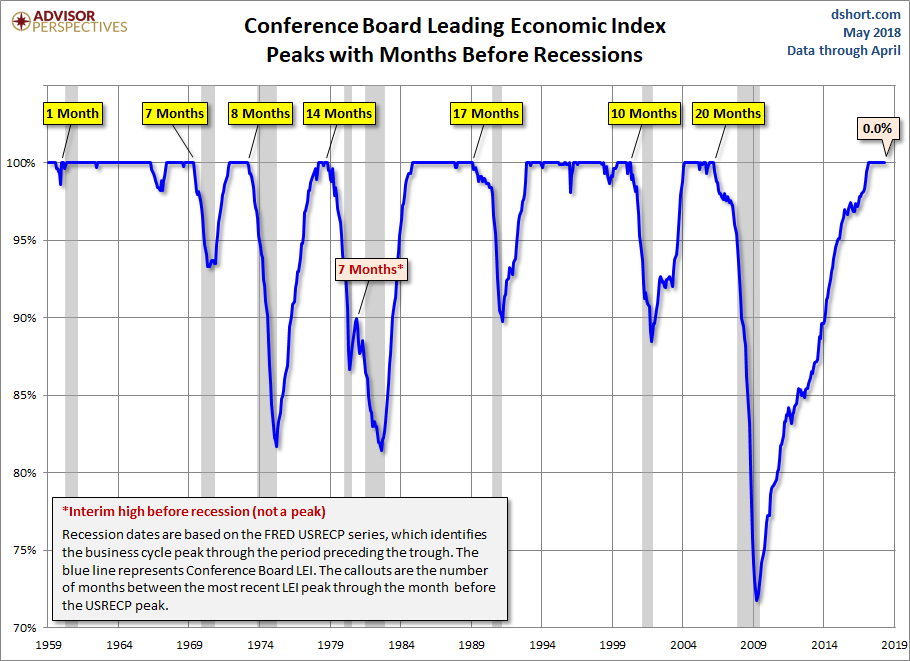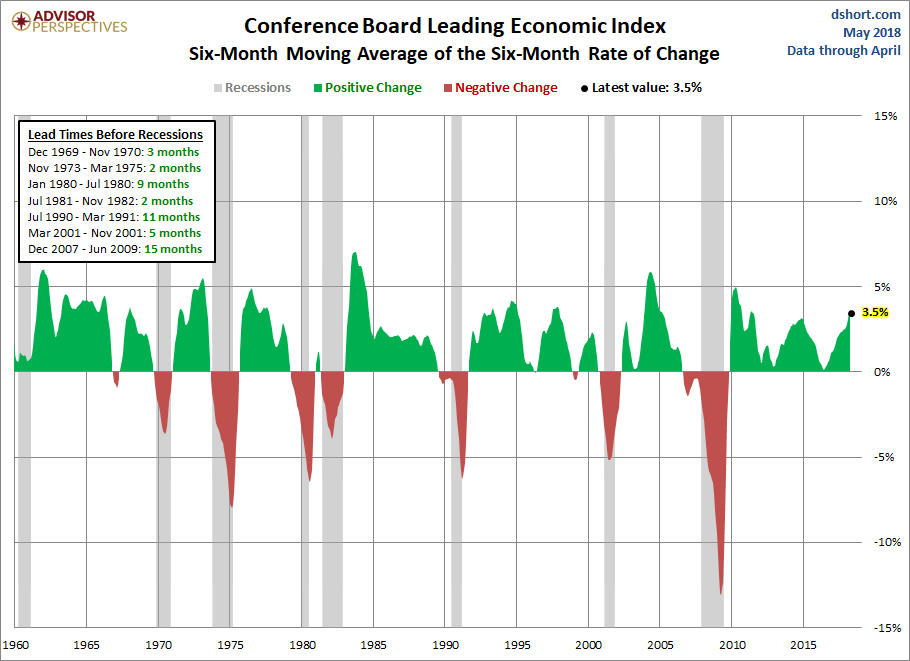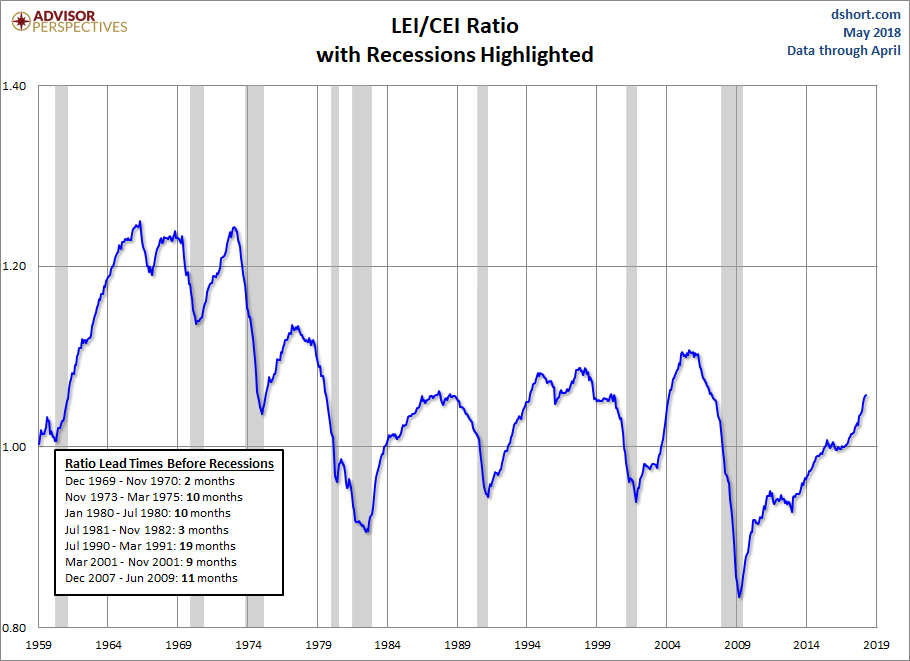Conference Board Leading Economic Index: Increases Continue In April
The latest Conference Board Leading Economic Index (LEI) for April increased to 109.4 from 109.0 in March. The Coincident Economic Index (CEI) came in at 103.5, up from the previous month.
The Conference Board LEI for the U.S. increased again in April, with positive contributions from the yield spread, weekly hours in manufacturing, the ISM® new orders index, initial claims for unemployment insurance (inverted) and consumer expectations for business conditions outweighing negative contributions from stock prices and building permits. In the six-month period ending April 2018, the leading economic index increased 3.3 percent (about a 6.7 percent annual rate), slightly faster than the growth of 3.0 percent (about a 6.1 percent annual rate) during the previous six months. The strengths among the leading indicators remain very widespread.
The Conference Board CEI for the U.S., a measure of current economic activity, also improved in April. The coincident economic index rose 1.1 percent (about a 2.2 percent annual rate) between October 2017 and April 2018, the same pace of growth as over the previous six months. In addition, the strengths among the coincident indicators have remained very widespread, with all components advancing over the past six months. The lagging economic index increased at the same pace as the CEI. As a result, the coincident-to-lagging ratio remained unchanged. Real GDP expanded at a 2.3 percent annual rate in the first quarter, after an increase of 2.9 percent (annual rate) in the last quarter of 2017. [Full notes in PDF]
Here is a log-scale chart of the LEI series with documented recessions as identified by the NBER. The use of a log scale gives us a better sense of the relative sizes of peaks and troughs than a more conventional linear scale.
(Click on image to enlarge)

For additional perspective on this indicator, see the latest press release, which includes this overview:
“April’s increase and continued uptrend in the U.S. LEI suggest solid growth should continue in the second half of 2018. However, the LEI’s six-month growth rate has recently moderated somewhat, suggesting growth is unlikely to strongly accelerate,” saidAtaman Ozyildirim, Director of Business Cycles and Growth Research at The Conference Board. “In April, stock prices and housing permits were the only negative contributors, whereas the labor market components, which made negative contributions in March, improved.”
For a better understanding of the relationship between the LEI and recessions, the next chart shows the percentage-off the previous peak for the index and the number of months between the previous peak and official recessions.
(Click on image to enlarge)

LEI and Its Six-Month Smoothed Rate of Change
Based on suggestions from Neile Wolfe of Wells Fargo Advisors, LLC and Dwaine Van Vuuren of RecessionAlert, we can tighten the recession lead times for this indicator by plotting a smoothed six-month rate of change to further enhance our use of the Conference Board's LEI as a gauge of recession risk.
(Click on image to enlarge)

As we can see, the LEI has historically dropped below its six-month moving average anywhere between 2 to 15 months before a recession. The latest reading of this smoothed rate-of-change suggests no near-term recession risk. Here is a twelve month smoothed out version, which further eliminates the whipsaws:
(Click on image to enlarge)

The Conference Board also includes its Coincident Economic Index (CEI) in each release. It measures current economic activity and is made up of four components: nonagricultural payroll, personal income less transfer payments, manufacturing and trade sales, and industrial production. Based on observations, when the LEI begins to decline, the CEI is still rising. Here's a chart including both the CEI and LEI.
(Click on image to enlarge)

Here is a chart of the LEI/CEI ratio, which is also a leading indicator of recessions.
(Click on image to enlarge)

Disclosure: None.



